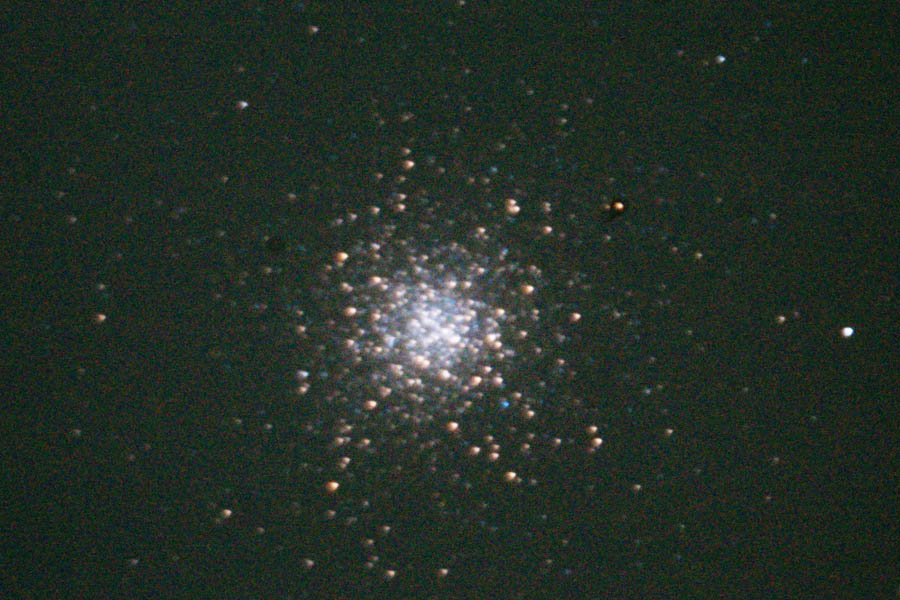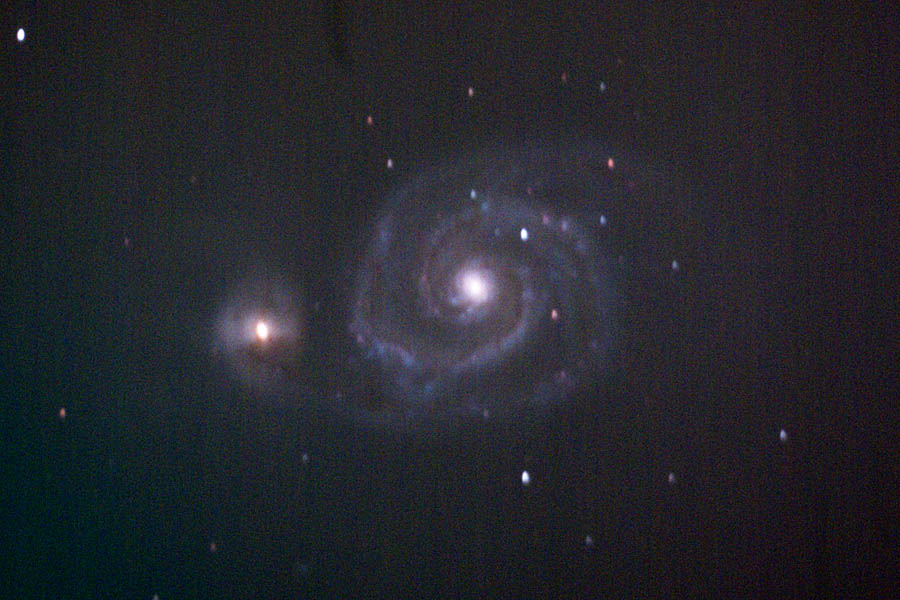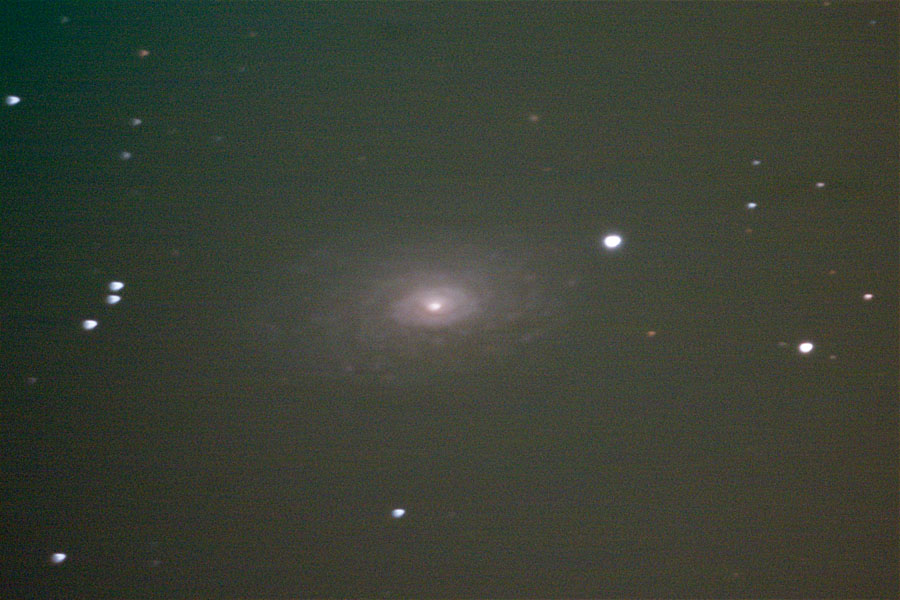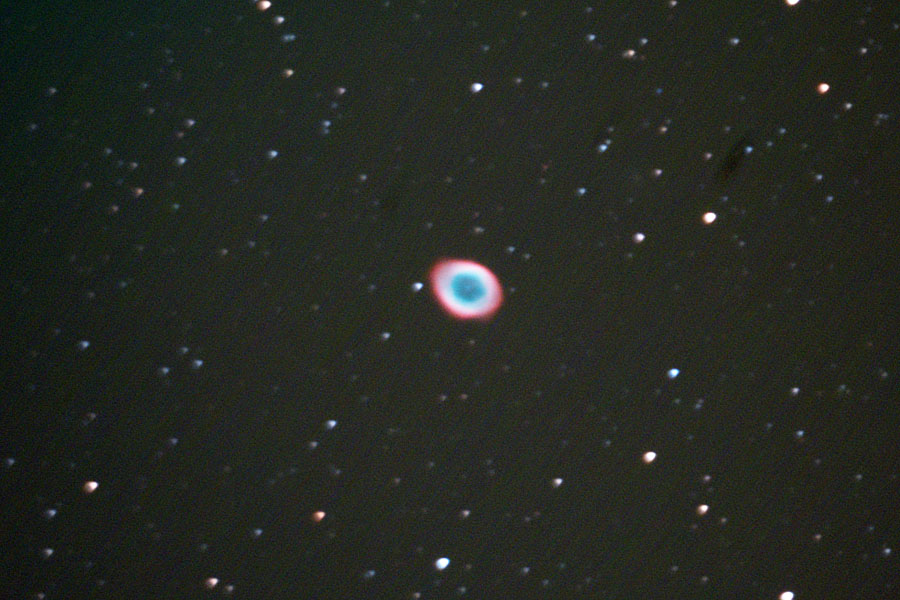As part of my periodic error testing on the mount, I have been gathering tracking data during my recent photo runs.
I suppose it’s more accurate to say that I have been pointing at a DSO and taking long exposures while gathering tracking data, so that I can get a visual representation of the accuracy of the tracking.
I had been considering the DSO images “throwaway”, because I was more interested in the tracking data, but I went through my raw data last night, and realized that I had a backlog of about 4 or 5 images that had been gathered during these runs.
So I started processing these for the fun of it. I did not apply dark frames (although I could and should have, and might reprocess with them).
So what follows is a mishmash of integration times and resulting quality, but hey, these are essentially freebies, and represent the first shots out of the new C9.25. None of the images have darks, flats, or bias frames applied.
Here’s a single frame of M13; I got all set up to go, and 3 shots in, the clouds rolled in. This is a single 2-min frame.
Here’s an hour of M51; this shot was the day after a full moon, so there was bright light all over the sky.
This is 33 frames (representing 2.5 hours) of M63 shot over 2 successive nights back in April.
Finally, here’s one I have been wanting to try for a long time, and at last I have enough magnification to attempt it. M57 (The Ring Nebula) is only 1′ in diameter, so it’s pretty tiny for the D70. This is one hour of data, and only my second or third attempt at this famous object.
Since I processed all of these at the same time, and since this is essentially the first light for the C9.25, this is the first time I’ve had a chance to judge the optics.
It’s pretty obvious that the optics need some work — there is really bad coma all the way across these images (stars look like ice cream cones), which is normal for an SCT, but the coma all points in the same direction, which means that the camera is not pointed at the center of the FOV. So, the scope needs collimation. Note that the M51 coma goes in a different direction than the other shots; I run with “north is up” for my photos, but M51 is oriented north-south, so most photos of the object are rotated 90deg CCW during processing, and I did the same for this one.
More work to be done to get the new gear in tune. I’ve only collimated one SCT. We’ll see how I do on this one.





MOST COMMENTED
Observatory
Observatory 2.0 – Time has come today!
General / Maintenance
First Light, a deeper look
Mount / Observatory / Telescope
Observatory 2.0 – Result!
Observatory
Observatory 2.0 – The Pier goes in
Gear / General / Maintenance
Martin Farmer Wormblock installation notes
Deep Sky / Long Exposure Photography
NGC2244, The Rosette Nebula
Deep Sky / Long Exposure Photography
Another beautiful night.